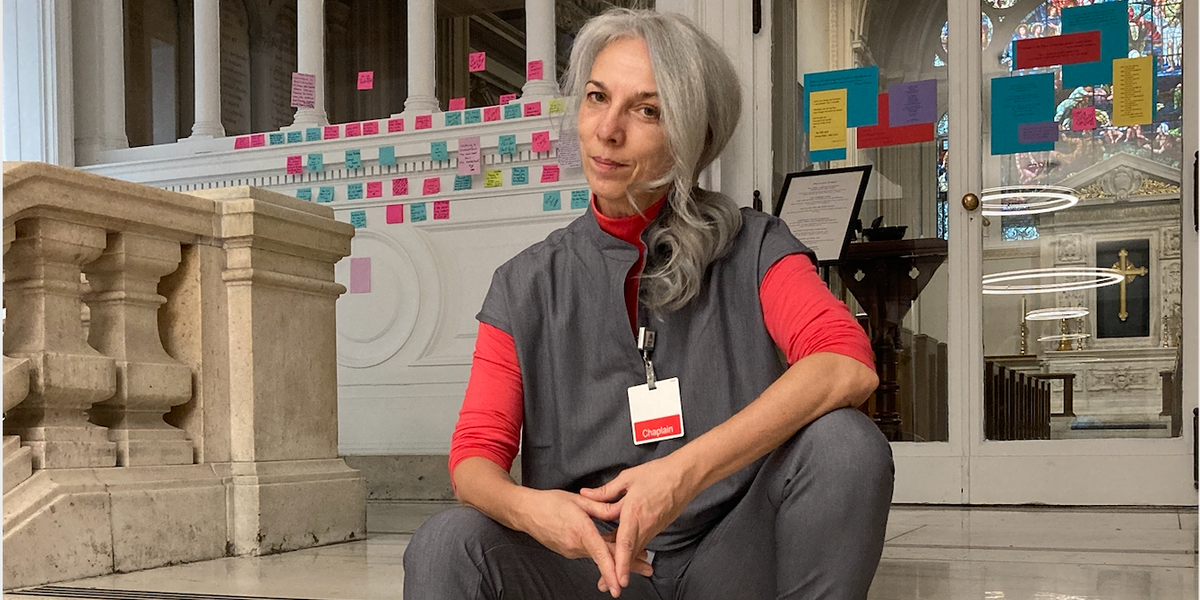Choreographer Keely Garfield Doubles as an Interfaith Chaplain at Mount Sinai Hospital
To Keely Garfield, there’s little difference between supporting those who suffer and connecting with audiences through dance—both walk the same path of human empathy. Lauded for her delightfully unpredictable dance work, Garfield’s recently launched a surprising new pursuit: interfaith chaplaincy. Now in her residency, she offers relief to ailing patients at Mount Sinai Hospital in New York City—including those fighting COVID-19.
She recently spoke to Dance Magazine about how she got into this work, what it takes and how often she dances in the hospital

Garfield in her piece Twin Pines
Julietta Cervantes, courtesy Garfield
What drew her to chaplaincy
“Dance is a kind of vehicle to feeling one’s life, knowing oneself, and being in relationship with both the body and the world. That hunger and curiosity, that drive to know, is one reason I became a chaplain. There aren’t many jobs outside of dance that fulfill that call to be fully engaged.”
“I started practicing yoga to keep up my dancing body and loved it. If I screwed up my back, I would put myself in a restorative yoga pose, or for my own stage fright, I would breath in lavender oil. I became a yoga teacher, which led me to working in wellness for dancers as well as with the sick. Somewhere in that work with the body I thought, What about the spirit?”
What the work is like
“Becoming a chaplain is super-intense. It’s a clinical training like perhaps a psychotherapist or social worker would engage in—akin to doing a master’s.”
“Day to day, I have been assigned to trauma, palliative care and the behavioral health unit, all of which require me to take a deep dive into the work of traumatic response.”
“There is a misconception that chaplains are about religion. They provide emotional and spiritual support to patients, families and staff, and what that looks like is broad and deep. Maybe it’s a prayer. Maybe it is opening up an apple juice for someone. A lot of it is sitting with someone who is dying and holding a hand. It’s about learning what gives people strength.”
“Sometimes people will see my badge and say, ‘Oh, no, I’m not religious,’ and I will say, ‘Nor am I,’ which opens the door to having a beautiful exchange.
Bringing dance to the hospital
“I’ve yet to incorporate dance into my chaplaincy work, though it’s only a matter of time. But what I do find myself doing is dancing down the hall when no one is looking. Sometimes when I’m waiting alone outside the elevator I will knock out a couple of turns. I try to dance around the hospital as a form of meditation.”
“I also spend five minutes in my office dancing. It’s medicine I need now more than ever. It delights me.”




